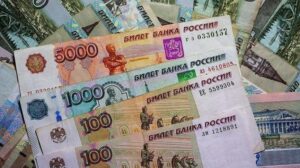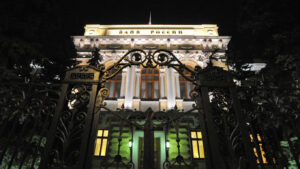
STRATEGIC ASSESSMENT. Russia’s Central Bank said it will resume buying and selling foreign currency through its sovereign wealth fund next year as the ruble continues to recover from a dramatic summer slide.
The Russian currency has been extremely volatile since February 2022, when Russia launched its full-scale military offensive on Ukraine and the West hit Moscow with an unprecedented package of sanctions.
The ruble has gained 14% since the start of October after Moscow reimposed currency controls, hiked interest rates and halted foreign currency interventions.
Russia’s Central Bank said will resume operations under its so-called “budget rule” from January 2024. It suspended those transactions in August as the ruble slid below 100 against the U.S. dollar.

Under the mechanism, the Central Bank buys and sells foreign currency — Chinese yuan since the imposition of Western sanctions — to stabilize the ruble, which is highly sensitive to global oil prices and Moscow’s earnings from its crucial energy exports.
When revenues are below a set threshold, Russia sells yuan from the National Wealth Fund and buys rubles to cover the shortfall for daily government spending.
If revenues are higher than expected, it buys yuan to save in the fund.
Russia suspended planned purchases in August because they were heaping extra pressure on the falling ruble.

The Bank said it would take into account those missed purchases, as well as how much the government has used from the fund to cover this year’s budget deficit, in setting the level of interventions for next year.
Analysts said the bank will likely be a net seller of foreign currency, despite strong energy income — something that should provide further support to the Russian currency.
The ruble was trading around 88 to the U.S. dollar on Monday, up from an 18-month low of 102 in early October.





